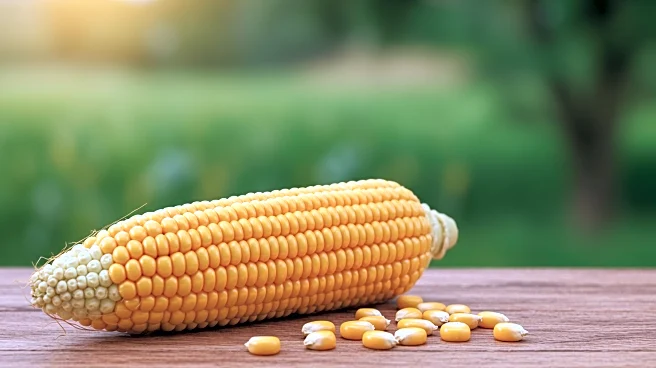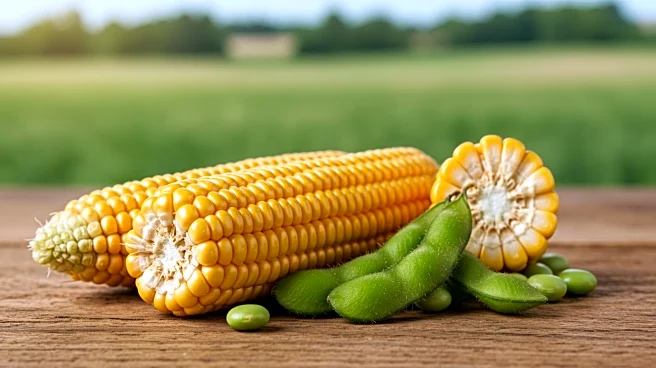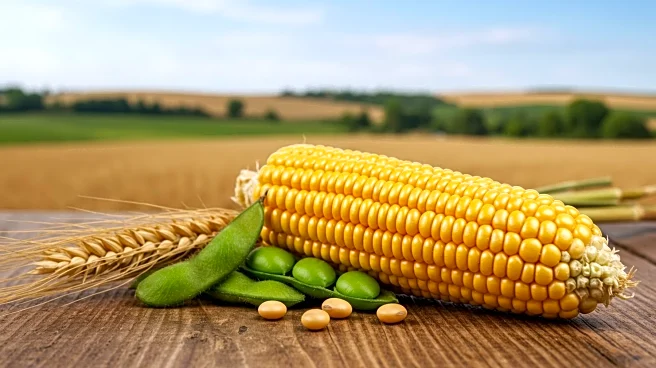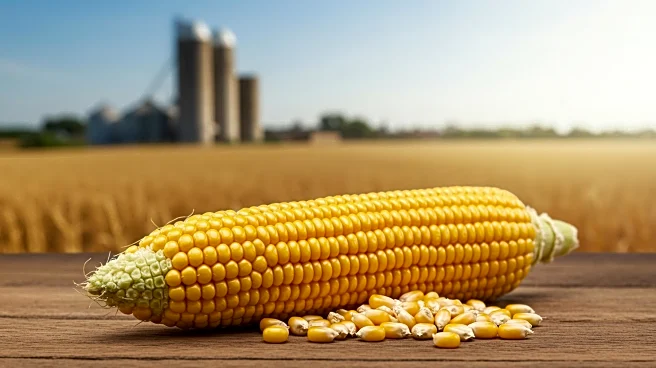What's Happening?
The United States Department of Agriculture (USDA) has released its 20th Crop Progress report for the 2025 growing season, highlighting a decline in the condition of the U.S. corn crop. As of August 17, 97% of the corn crop in the top 18 corn-growing states had reached the silking stage, slightly below the five-year average of 98%. The report indicates that 72% of the corn has reached the dough stage, which is one point behind the average. Additionally, 27% of the crop has reached the dent stage, slightly ahead of the average. The USDA noted that 3% of the corn crop has reached maturity, aligning with the five-year average. The condition of the corn crop was reported as 71% good/excellent, 21% fair, and 8% poor/very poor, marking a decrease of one percentage point in the good/excellent category for the second consecutive week.
Why It's Important?
The decline in corn condition is significant for U.S. agriculture, as corn is a major crop with substantial economic impact. A decrease in crop quality can affect market prices, influence export levels, and impact the livelihoods of farmers. The report also provides insights into the soybean, wheat, and oat crops, which are crucial for food supply chains and agricultural markets. Soybeans are progressing well, with 95% blooming and 82% setting pods, while wheat and oats are slightly behind their respective averages. These developments are critical for stakeholders in the agricultural sector, including farmers, traders, and policymakers, as they navigate market dynamics and plan for future planting and harvesting seasons.
What's Next?
The USDA will continue to monitor crop conditions and provide updates in subsequent reports. Farmers and agricultural businesses may need to adjust their strategies based on these findings, potentially exploring alternative crops or investing in technologies to mitigate environmental stress. Policymakers might consider support measures for affected farmers, while traders will closely watch market trends to anticipate price fluctuations. The ongoing assessment of crop conditions will be crucial in determining the overall yield and economic outcomes for the 2025 growing season.
Beyond the Headlines
The report underscores the broader challenges faced by the agricultural sector, including environmental stressors such as extreme weather conditions and herbicide injury. These factors can lead to abnormalities in crop development, affecting yield and quality. The agricultural industry may need to invest in research and development to enhance crop resilience and adapt to changing environmental conditions. Additionally, the report highlights the importance of sustainable farming practices and the need for innovation in crop management to ensure long-term food security.











